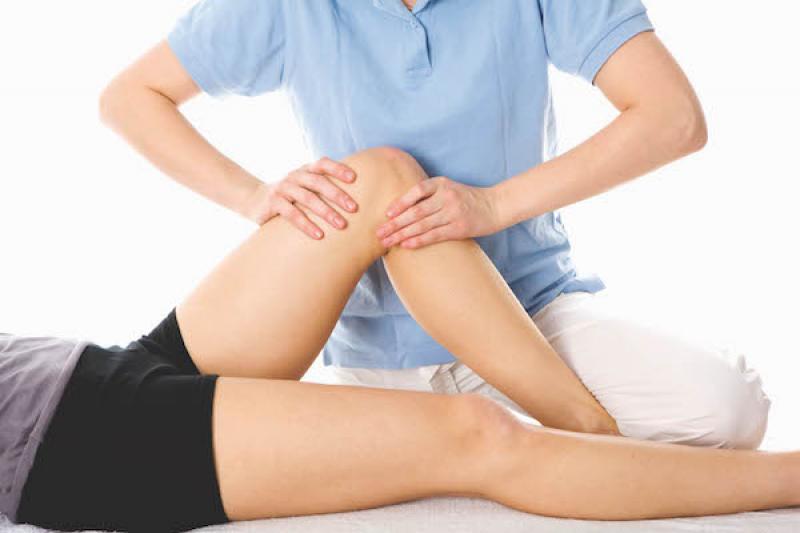
Osteoarthritis of the knee
Osteoarthritis of the knee (knee OA) is the inflammation and degeneration of the bones that form the knee joint.
It is a progressive disease causing inflammation and degeneration of the knee joint that worsens over time but may also develop as a secondary condition following a traumatic knee injury. The diagnosis of knee OA is based on 2 primary findings: radiographic evidence of changes in bone health and an individual’s symptoms.
Pain occurs when the cartilage covering the bones of the knee joint wears down. This narrows the space between the bones and causes friction. Because the knee is a weight-bearing joint, your activity level, and the type and duration of your activities usually have a direct impact on your symptoms.
However, misconceptions about osteoarthritis proliferate – perhaps most notably, the myth that it only affects the elderly. This is not the case: although old people are more likely to get osteoarthritis (it is, in fact, most common in adults in their mid-40s and older), children and young people also develop this condition.
Download our exclusive FREE E- Book guide on managing Knee pain
Although osteoarthritis is more common in older people, many young people in their teens, 20s and 30s can still suffer with the condition. The symptoms are generally the same, no matter how old you are, but it can affect young people differently as they are generally wanting and needing to be more active with study, work and recreational activities.
Symptoms of Knee OA can include:
- Worsening pain during or following activity, particularly with walking, climbing, or descending stairs, or moving from a sitting to standing position
- Pain or stiffness after sitting with the knee bent or straight for a prolonged period of time
- A feeling of popping, cracking, or grinding when moving the knee
- Swelling following activity
- Tenderness to touch along the knee joint
- Usually Symptoms develop over a gradual period of time
Depending on the stage of the disease and whether there are associated injuries or conditions, knee OA can be well managed with appropriate physiotherapy.
Simple tips on home management
- Weight Loss- even modest changes will decrease the load on your joints
- Exercise- in conjunction with specific training, low impact activities such as cycling, swimming and walking are generally beneficial
- Medicines- paracetamol, NSAIDs , anti-inflammatory gels can offer some relief.
- Aid and supports- our Physios can tailor taping and supports to help unload your joints. A walking stick is another option for acutely painful knees.
- Heat and Cold packs. Cold is actually usually more effective in pain control.
- TENS machines may offer relief. Our Physios can instruct you in the correct use of this to maximize the pain controlling effect.
- Sleep well – get adequate rest to help cope.
- Activity modification- know your triggers and limits.
See a Physio for thorough assessment and treatment options – we can improve mobility and strength to help with daily living.
How a physiotherapist can help:
- Regaining range of motion
- Muscle strength of knee, hip and core
- Manual therapy to decrease pain and improve function
- Therapeutic modalities and dry needling for pain relief
- Bracing and taping to unload pain sensitive structures
- Heat moulded orthotics to control foot over pronation and medial knee stress.
- Advice and activity modification education with individual exercise programs tailored to your activity demands.
6 simple exercises to help take control of knee OA
- Quads stretch - hold 30 secs. Repeat 3 X a day
- Calves stretch - hold 30 secs. Repeat 3 X a day
- Hamstring stretch- hold 30 secs. Repeat 3 X a day
- Sitting, straighten knee and hold 30 secs. Repeat 10 X - 2X day
- Step ups. Step up on to small step and back down again. Alternate leading leg. Go for 30 secs. 10 X, 2X a day. Start gently and increase as your knee copes.
- Strengthen your hips to improve knee control- bridges, side leg lifts and clams. 10 X, 2 X a day.
These exercises are recommendations. Never push through pain and see your physiotherapist if pain persists for an exercise program tailored to your needs.
In some cases of knee OA, the cartilage may be involved. In the past, surgery to repair or remove parts or all of this cartilage was common. Current research, however, has shown in a group of patients who were deemed surgical candidates, 60-70% of those who participated in a physiotherapy program , instead of surgery, did not go on to have surgery. Further, after 1 year those outcomes were unchanged. This study suggests that physiotherapy may be an effective alternative for those patients who would like to avoid surgery. (Katz JN, Brophy RH, Chaisson CE, et al. Surgery versus physical therapy for a meniscal tear and osteoarthritis. N Engl J Med. 2013;368:1675-1684)
If you would like some extensive information on managing your Knee pain, visit the link below to download our exclusive FREE E- Book guide on managing Knee pain
Our Physios have advanced knowledge, experience and skills in the treatment of knee osteoarthritis. They will develop a program suited to the equipment you have available in conjunction with hands on manual therapy and pain relieving techniques. Call us on 83462000 or email to info@hindmarshphysio.com.au for an appointment soon.
Our Clinic is serious about helping people with knee pain We also run six weekly group classes on education, pain management, strengthening and understanding your knee pain. Our Nifty knees classes provide individually tailored exercises in a friendly and small group supportive environment -claimable through your health fund. Please call either of our clinics if you would like more information.
FREE E-Book hereBlog Archive
Contact Us
Hindmarsh Physiotherapy & Sports Injury Clinic
281 Port Road
HINDMARSH SA 5007
Appointments
